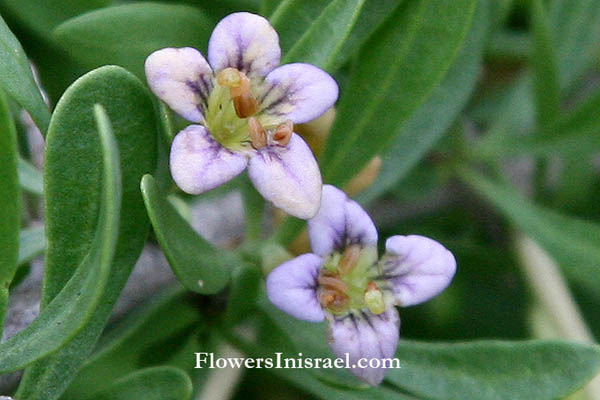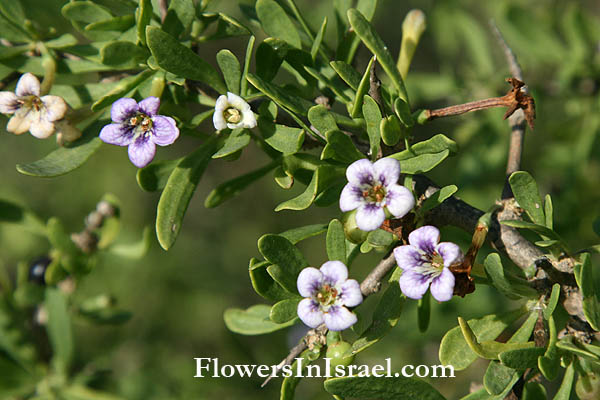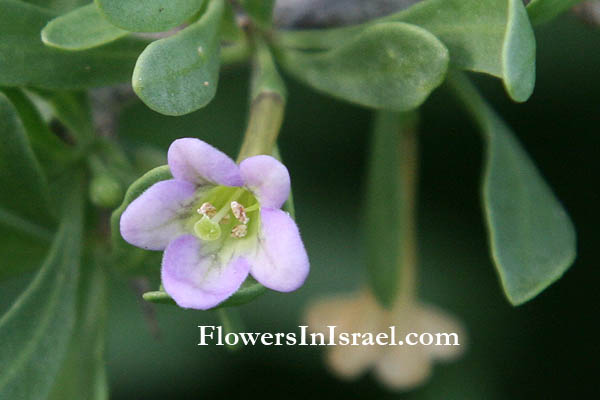Hebrew: אטד החוף, Arabic: عوسج
| Scientific name: | Lycium schweinfurthii Dammer | |
| Common name: | Boxthorn, Lycium schweinfurthii | |
| Hebrew name: | אטד החוף | |
| Arabic name: | عوسج | |
| Family: | Solanaceae, סולניים |

|
| Life form: | Phanerophyte, shrub | |
| Spinescence: | Stems | |
| Stems: | Up to 200 cm; thorny branches | |
| Leaves: | Alternate, entire | |
| Flowers: | Violet, white | |
| Fruits / pods: | Berry, black and red-orange | |
| Flowering Period: | Almost the whole year | |
| Habitat: | Light soils | |
| Distribution: | Mediterranean Woodlands and Shrublands, Semi-steppe shrublands, Shrub-steppes | |
| Chorotype: | Mediterranean | |
| Summer shedding: | Perennating |
 Location: The Sharon Plain Derivation of the botanical name: Lycium, from Lycia, an ancient country in Asia Minor, and / or from the Greek name Lykion used by Dioscorides and Pliny for some thorny tree or shrub. schweinfurthii, for Charles Schweinfurth (1890-1970), an American botanist. The Hebrew name: אטד, atad, related to Aramaic-Syrian: אטדא, atda, Arabic: 'atad, Akkadian: etidu and ittitti.
Pedanius Dioscorides (ca.40-ca. 90) notes medicinal uses of Lycium, stating that preparations of various plant parts relieved inflammation and relaited ailments 
|